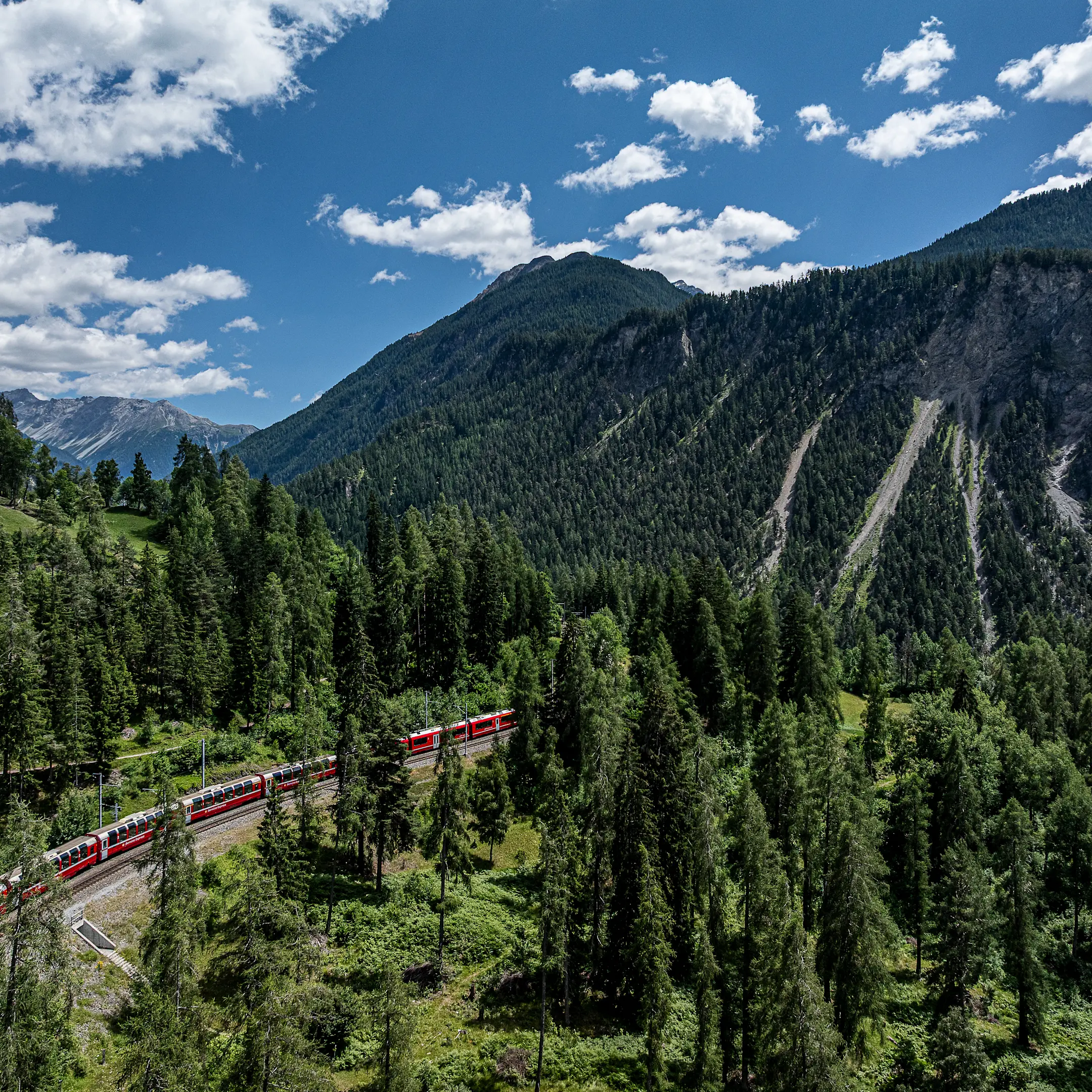
Harmony in nature and technology
The Rhaetian Railway network is more than just a set of railway tracks: it is a masterpiece of engineering and demonstrates perfect harmony between man and nature. On the UNESCO World Heritage route, the trains wind their way through the fascinating high mountain landscape of the Swiss Alps, offering passengers impressive experiences in maximum comfort.
The harmony of the elements did not come about by chance: with forward-looking planning and a clever combination of technological innovation, past, current and future generations ensure a seamless transition between technology and landscape. This bond with home and nature has been what has set RhB apart since 1889.
In addition to the railway lines themselves, the surrounding landscape is therefore also part of the UNESCO world heritage “Rhaetian Railway in the Albula/Bernina Landscapes”. A distinction is made between three different buffer zones.
Map sections
for download
Planning together for World Heritage
Guidelines for high-quality planning and construction within the UNESCO perimeter
The guidelines on high-quality planning and construction in the UNESCO World Heritage site are aimed at planners, authorities, decision-makers and the general public. Our aim is to raise awareness of the extraordinary value of this unique cultural landscape and, at the same time, to create a basis for responsible and coordinated implementation of construction projects in the World Heritage area.
The publication shows how the different interests in planning and approval procedures can be sensibly coordinated. To this end, it provides specific instruments and recommendations for action that enable sustainable development in harmony with the protection of World Heritage. A guide for everyone involved in shaping the future of this railway landscape!
Guidelines for planning and construction UNESCO
for download
